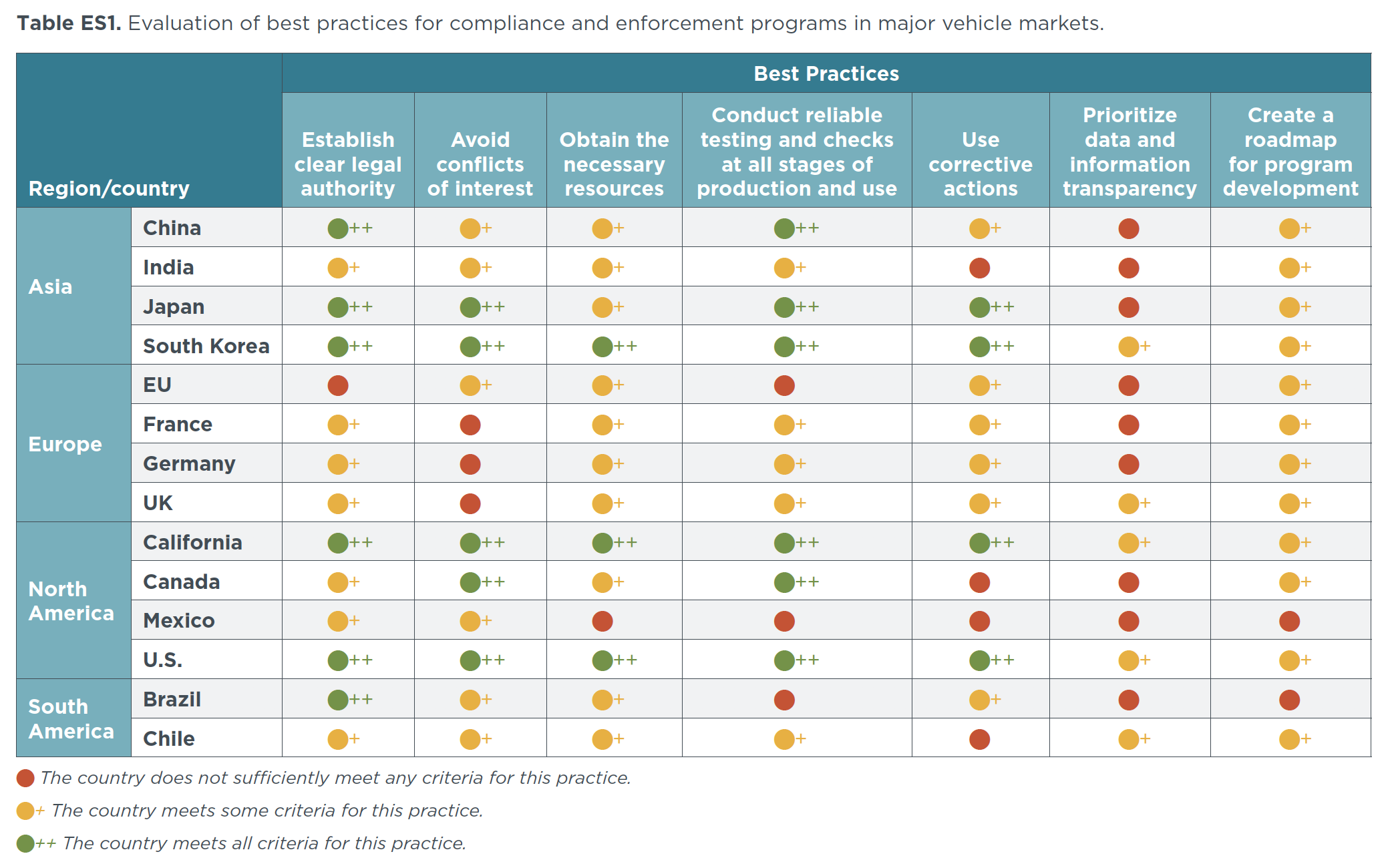Report
Global baseline assessment of compliance and enforcement programs for vehicle emissions and energy efficiency
As vehicle pollution and fuel efficiency regulations have become more stringent, the technologies required to mitigate emissions and reduce fuel consumption become increasingly complex. One consequence is that government agencies around the world must improve their compliance and enforcement efforts to ensure that the intended outcomes from emission-control and fuel-efficiency programs are achieved in fact.
This study is the first to take stock of compliance and enforcement (C&E) practices pertaining to emission and efficiency regulations in key vehicle markets. It is based on survey data, in-person interviews, and communications with experts and stakeholders working, as well as in-depth research in the limited published research.
The study assesses C&E activities against a range of criteria, including legislative framework and resources, testing campaigns conducted, transparency, and vision for development. It covers 14 vehicle markets that combined accounted for 87% of global vehicle sales in 2015.

Among the study’s important findings:
- Not all regulatory agencies have sufficient legal authority to enforce compliance
- Budget and resource constraints and uncertainty frequently hamper C&E programs
- The most successful C&E programs test vehicles at a number of different stages of their useful life and put the testing burden on manufacturers
- Penalities for noncompliance vary significantly across regions
- Many C&E programs lack transparency, making public monitoring and oversight difficult or impossible and undermining public confidence
- C&E programs tend to focus more on compliance with emission standards than on GHG and fuel consumption
Attachments
CE-Report_Fact-Sheet_vF2.pdf